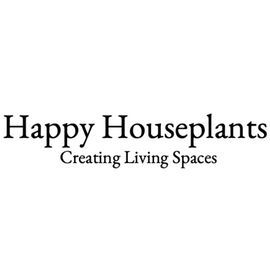Harnessing Nature's Beauty: Integrating Houseplants in Exceptional Interior Design
In interior design, incorporating houseplants has become an increasingly popular trend. Beyond their aesthetic appeal, houseplants offer many benefits that extend far beyond their green foliage. From creating a sense of serenity to adding texture and visual interest, these natural wonders can transform spaces into havens of tranquillity. In this blog, we will explore the art of using houseplants in interior design, offering expert insights and creative strategies for designers seeking to harness the beauty and benefits of these living elements.
Biophilic Design: Bringing Nature Indoors: Biophilic design is a concept rooted in our innate connection to nature. Designers can create environments that foster well-being and productivity by integrating natural elements, such as houseplants, into interior spaces. Using large, lush plants as focal points or green walls can add a touch of tranquillity and create a harmonious balance between the built environment and nature. Incorporating plants with varying textures, shapes, and colours adds visual interest and evokes a sense of serenity and vitality.

Enhancing Visual Appeal and Ambiance: Houseplants can enhance the visual appeal and ambience of any interior space. From cascading vines to towering palms, the sheer diversity of plant species offers endless opportunities for creativity. Designers can experiment with different pot sizes, materials, and arrangements to create stunning displays. Hanging plants can add dimension and interest to ceilings, while tabletop plants can bring a touch of nature to coffee tables or shelves. By carefully selecting and positioning houseplants, designers can balance functionality and aesthetics.

Creating Focal Points and Dividing Spaces: Strategic placement of houseplants can help make focal points and divide spaces within an interior. Large, statement plants can serve as natural centrepieces, drawing attention and anchoring the overall design scheme. For open-plan spaces, designers can use plants as subtle partitions to define different areas while maintaining a sense of openness. Designers can establish visual boundaries by incorporating tall plants or screens without sacrificing natural light or flow.

Adding Texture and Softening Hard Surfaces: Houseplants introduce an organic element that softens interior spaces' often rigid and structured nature. The lush foliage, varied leaf shapes, and vibrant colours of plants add texture and depth to the overall design scheme. Placing plants near hard surfaces like concrete walls or glass windows creates a visually pleasing contrast, adding warmth and softness to the environment. Designers can also consider integrating trailing plants or vines to soften corners or edges, creating a more inviting and organic atmosphere.

Instilling a Sense of Well-being and Connection: Houseplants have a unique ability to instil a sense of well-being and connection with nature, which is particularly beneficial in indoor environments. Research suggests that exposure to nature or natural elements, even indoors, can reduce stress, enhance productivity, and improve mood. Designers can help create spaces that promote mental and emotional well-being by incorporating houseplants. Providing access to greenery and incorporating natural elements can foster a deeper connection with the natural world, ultimately improving occupants' overall quality of life.
Integrating houseplants into interior design is a powerful way to enhance aesthetically and emotional spaces. By embracing biophilic design principles and carefully selecting and placing plants, designers can create visually captivating environments that promote well-being and connection with nature. Houseplants offer endless possibilities for creativity, adding texture, depth, and a touch of tranquillity to any interior. So, let your imagination flourish, and let nature's beauty thrive within your designs.











Leave a comment